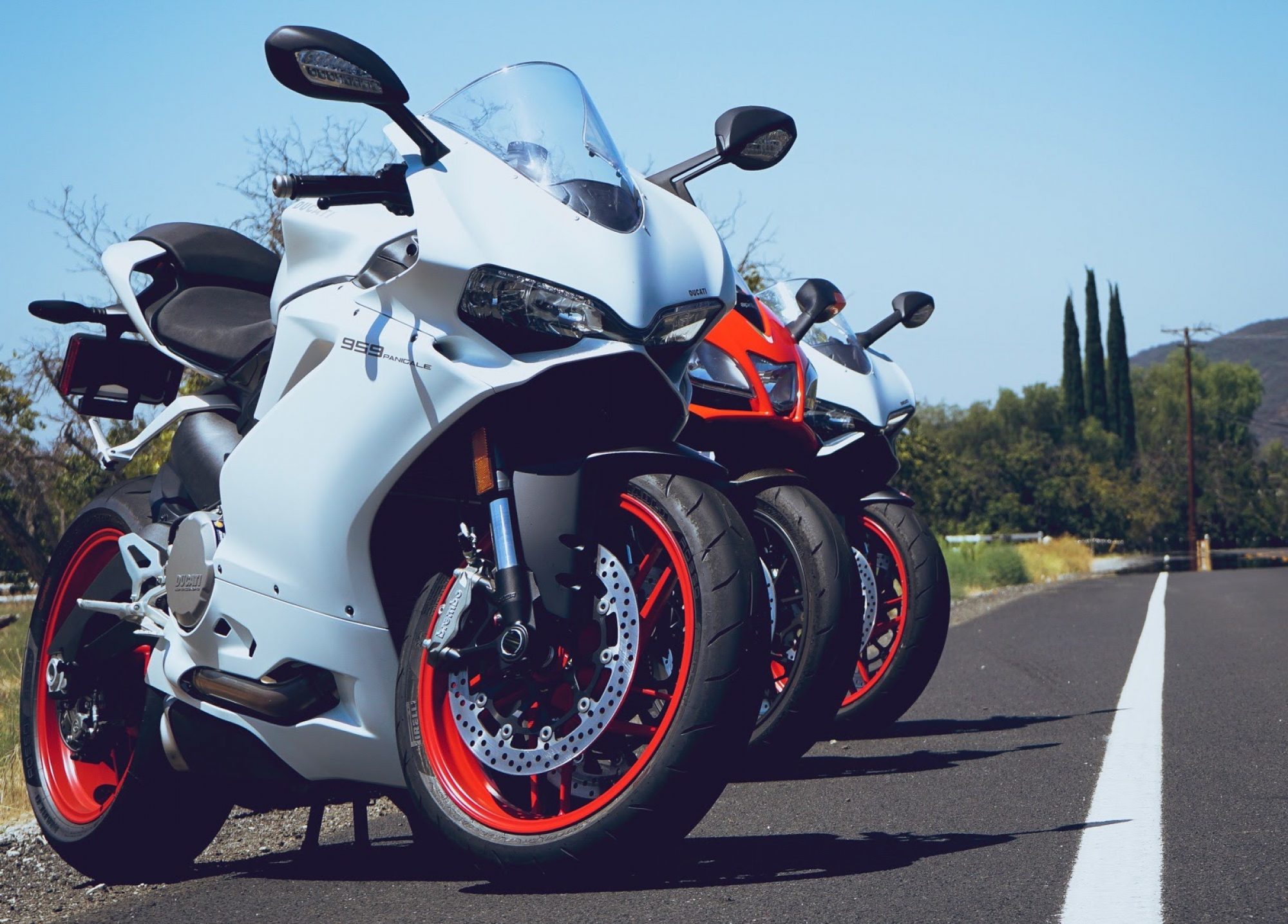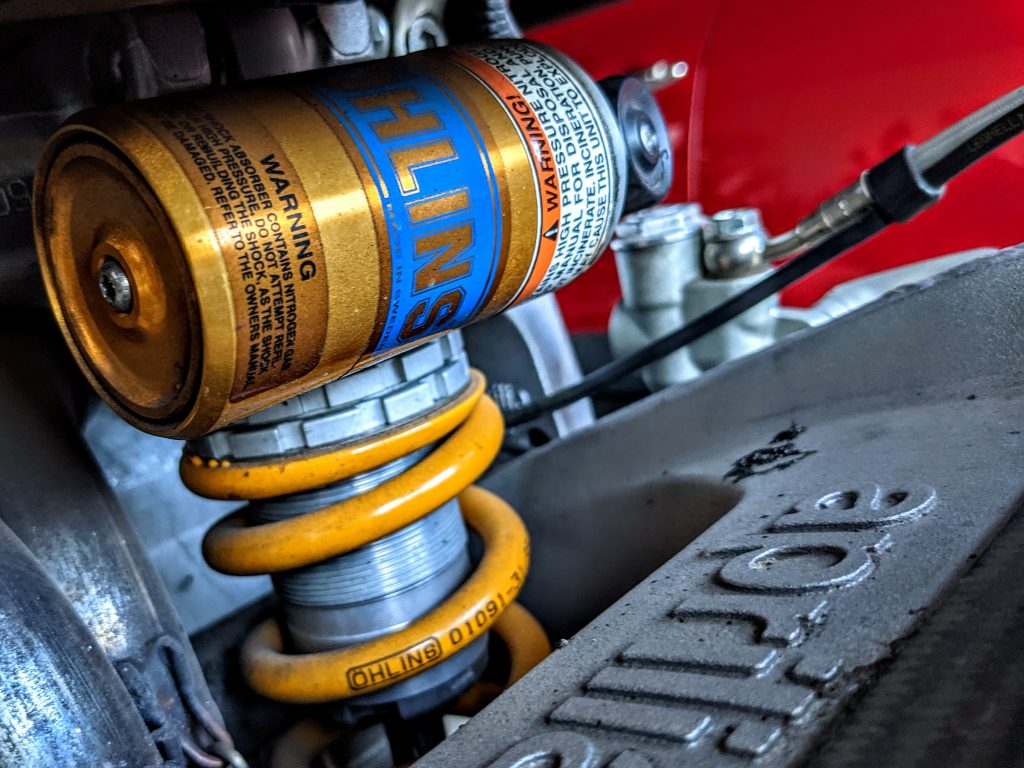
Often overlooked but critically important, the suspension on a motorcycle helps soak up bumps and keep the tires firmly planted. Poorly adjusted suspension makes for nervous riding, but well-adjusted suspension can make every ride better, especially in the turns. This is our summary of motorcycle suspension basics for beginners, namely what you’d see on modern sportbikes or standards.
For excellent beginner bikes like those on our list of best beginner sportbikes for 2021, the suspension is typically not adjustable except for the rear shock absorber’s spring preload. This means you have to live with the suspension as-is, but the setup is generally soft and forgiving. Adjustable suspension components are costlier, so don’t expect to see them until you buy a more expensive motorcycle. But it’s still important to understand what the components do and what type of adjustments are available.
Forks
At the front of the motorcycle are two telescopic forks, either in conventional or “upside down” style. The two main sections of the fork are confusingly called many different things, but it’s safe to call the fat part the slider and the skinny part the tube or stanchion. Outer fork tube and inner fork tube are common names as well. Inside each fork are a spring and various other components including valves and fork oil.
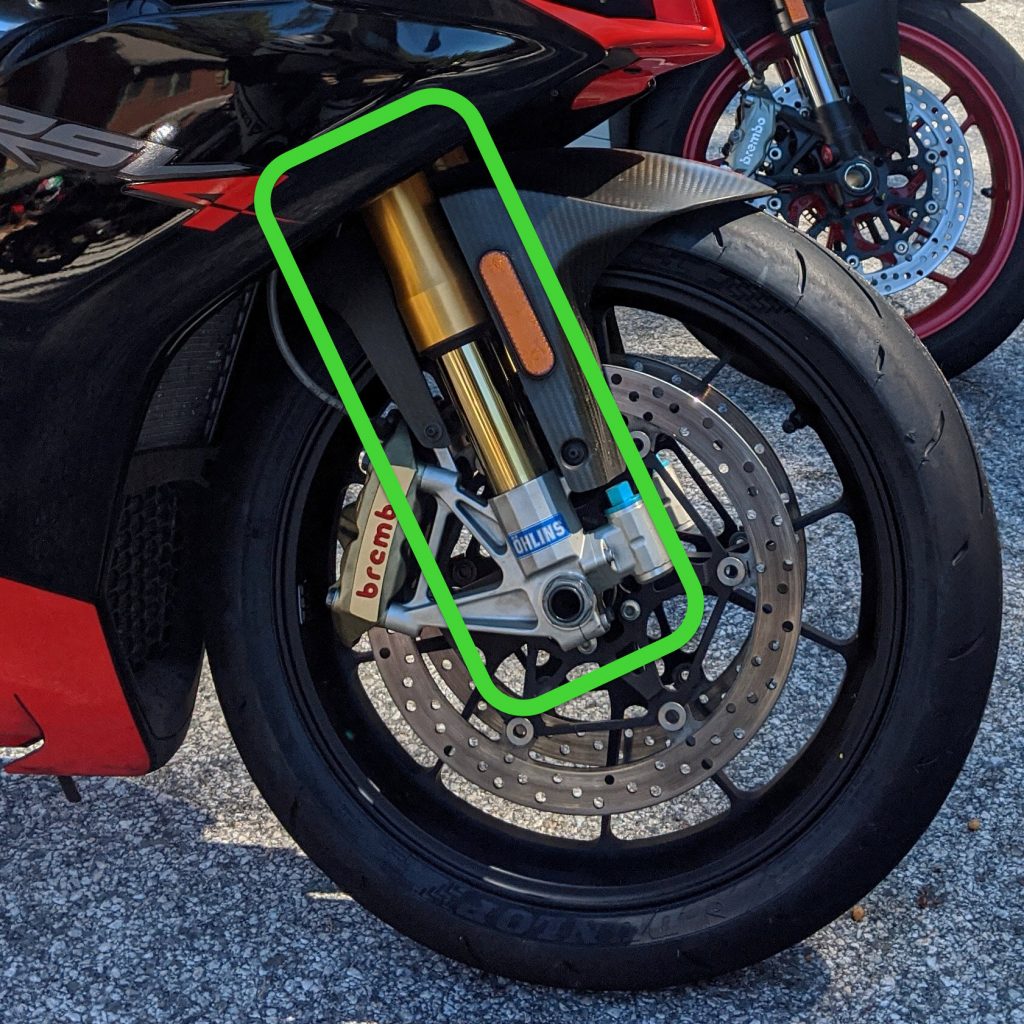
- On an upside down fork, the fat part is on top (see picture above)
- On a conventional fork, the skinny part is on top (see picture below)
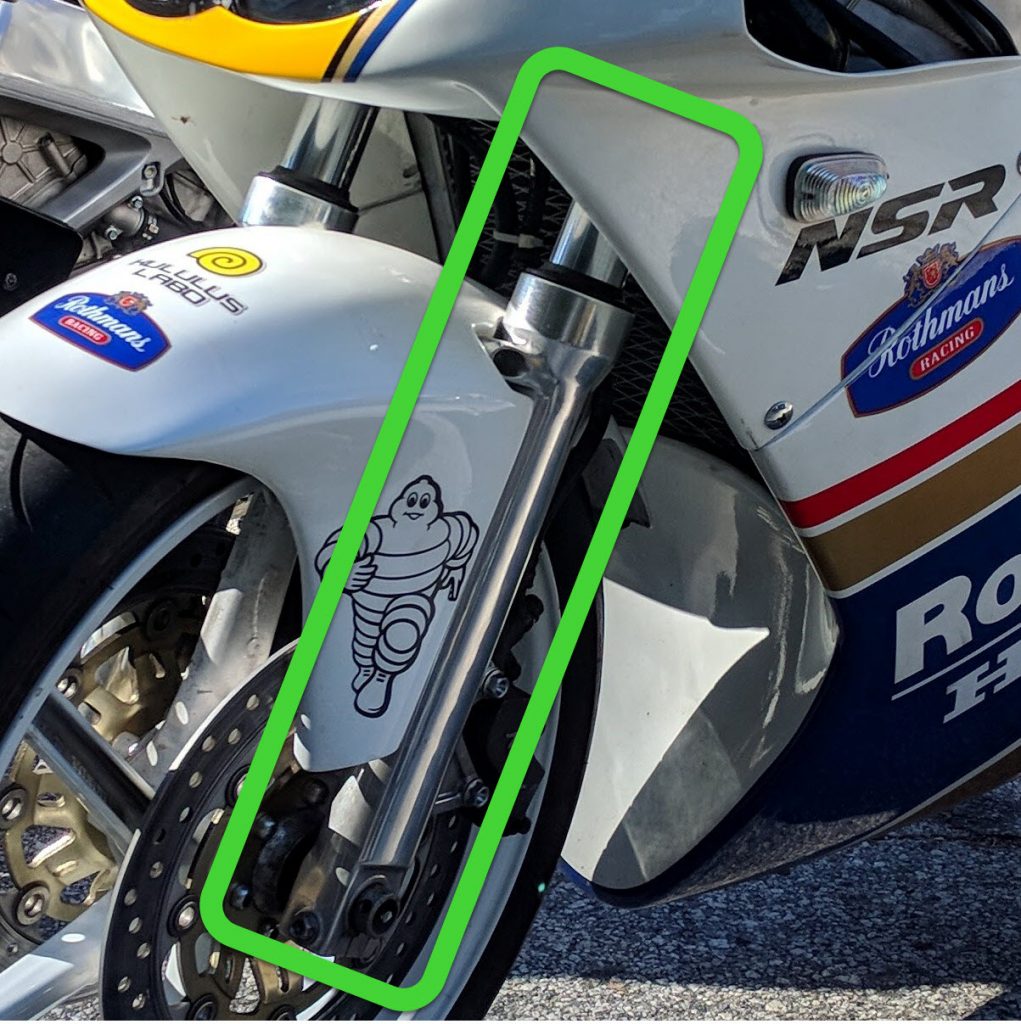
The bikes listed in our best beginner sportbikes for 2021 have non-adjustable forks, as do most motorcycles in that price range. They are purposely soft, making them more forgiving and usable for beginner motorcycle riders. The downside to non-adjustable forks is, uh, that they’re not adjustable. If you buy a Kawasaki Ninja 400 ABS and in two years decide to start racing on it, the stock forks and shock will be too soft for racetrack use. You will need to upgrade them to get the kind of adjustability suitable for racing. We cover some of those adjustments further below.
Shock
At the rear of a motorcycle, typically under the seat, is the shock. The shock handles the suspension duties for the rear wheel and is visibly different from the front forks, most notably because of the large external spring.
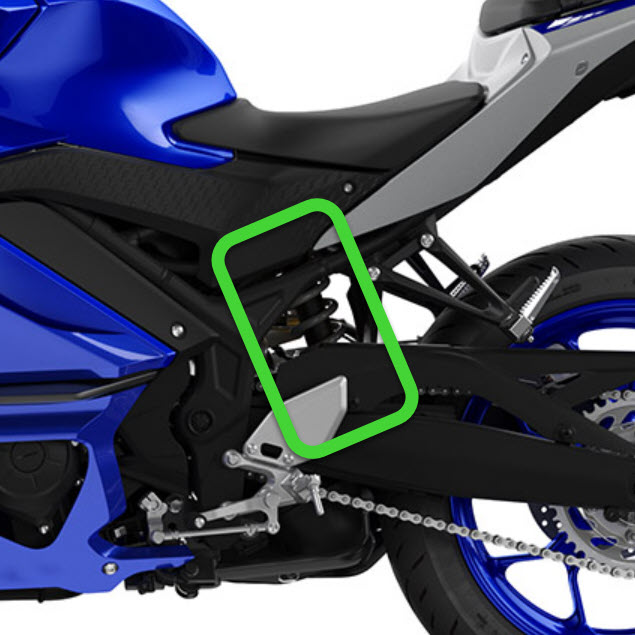
As mentioned earlier, the forks on beginner sportbikes are typically non-adjustable to save on costs. The shocks on these bikes follow suit, but there is one adjustable setting – the spring preload. A simple tool can be used to turn an adjustment ring on the shock and:
- Compress the spring, increasing preload and ride stiffness
- Decompress the spring, decreasing preload and ride stiffness
The change in stiffness achieved by adjusting spring preload is marginal though, so don’t expect miraculous changes. Again, if you decide to start racing on your Kawasaki Ninja 400 ABS, the forks and shock will need to be upgraded to adjustable units.
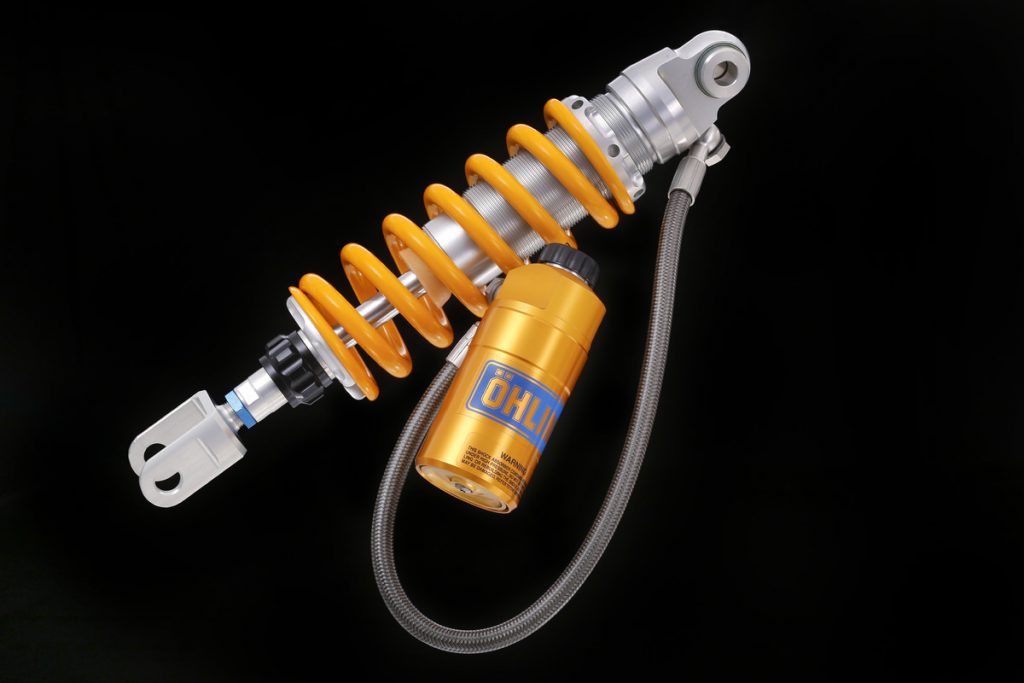
Adjustments
There are three main adjustments that can be made on fully adjustable motorcycle suspension. Again, this is a very brief overview, but it should give you a working understanding of the behaviors that suspension adjustments will change.
Compression Damping
This setting determines how easily the fork or shock will compress when braking, accelerating, or hustling through turns. Set too stiff, it will resist compressing and transfer more stress to the rest of the bike. Set too soft, it will compress easily and dive on the brakes or squat on acceleration more than desired.
Rebound Damping
This setting determines how quickly the fork or shock will bounce back after a compression, returning to its original position. Too much damping means the suspension won’t rebound fast enough after bumps, causing the tire to lose contact with the pavement and creating a bumpy ride. Too little damping will make the suspension rebound too fast, causing a bouncing effect and a floaty feeling ride.
Spring Preload
As mentioned earlier, the entry-level bikes on our Best Beginner Sportbikes for 2021 list have adjustable spring preload for the rear shock. Motorcycles with more expensive fully adjustable suspension gain adjustable spring preload for the forks. You can adjust the amount of compression added to the springs while at rest, which affects stiffness and the height of the front and rear of the bike. This is a critical part of setting sag, which is how much the suspension compresses when you sit on the bike. Sag is typically the first thing an experienced suspension tuner will adjust.
Further Reading Material
If you really want to nerd out on motorcycle suspension, I mean really get into it, Dave Moss will make your head explode. He’s a professional motorcycle suspension tuner who’s done endless work in motorcycle racing, and he’s personally adjusted the suspension on three motorcycles for me over the years.
https://davemosstuning.com/category/suspension/
